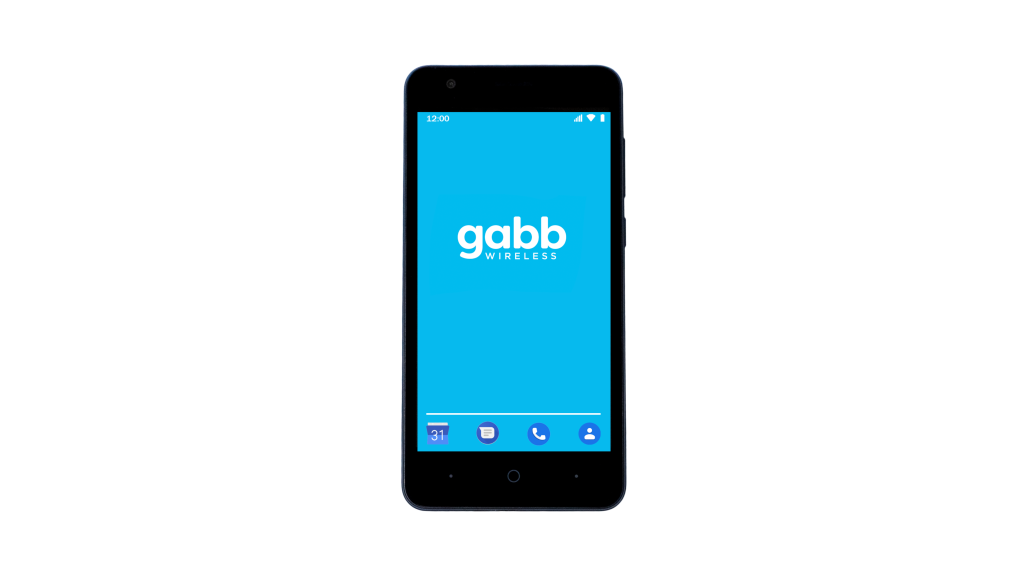Climate change, bullying, violence in schools: Kids are grappling with a lot these days. And smartphones, with their access to the internet and social media, often don’t help. So Gabb Wireless founder and CEO—and dad—Stephen Dalby decided to create a smartphone that is a kind of safe space for kids.
“All of the phones that we see today are really adult phones,” Dalby says. “That’s why they have ‘parental controls.’ These are adult phones that they’re trying to dumb down.”
In the summer of 2018, Dalby started researching phone options for his 12-year-old son, but he couldn’t find one he felt comfortable with. So with funding from an Indieogo campaign, angel investors and his personal savings, Dalby started Gabb Wireless, a phone network catering to kids, soon to offer two specially built phones with two different plan options. “It’s really one of the most complicated purchases that a parent makes,” Dalby says. “You want to be able to communicate with your child, but there are so many risks and dangers today just with the overconsumption of technology.”

His concern is warranted. According to a 2016 study done by Influence Central, kids get their first cell phone around age 10 on average, while most kids start their first social media account at 11. A small percentage even have their first social media accounts before they’re 10.
“A large part of this generation’s social and emotional development is occurring while on the internet and on cell phones,” reads a study done by medical journal Pediatrics. With mental health issues and social media increasingly linked, parents have every right to be concerned about their children’s usage of social media-enabled smartphones. Dalby references a 2018 study that found modern parents are more concerned about their teenagers’ technology use than recreational drug use or teen pregnancy.
“We’ve been very deliberate with a few things,” Dalby says about the Gabb Wireless phones. “First, it’s not a flip phone, because kids don’t want that. Second, we cannot have this device be a distracting device. We do not want 8-year-olds, 9-year-olds, 11-year-olds, getting in the habit of turning to a device and spending an exorbitant amount of time just looking at a screen. It is so unhealthy. The data is so clear.”


Priced at $99, the Gabb Wireless ZTE phone features call, text messaging, an alarm, a camera, a calculator, a calendar and an FM radio. It offers no app store or internet browser, meaning no social media or games. And on the Gabb Basic plan (which caters to 8- to 14-year-olds), there’s also no picture messaging. For the time being, there are no location services available, though the Gabb+ plan, which will be implemented through a Samsung phone and is expected to roll out in 2020, will allow for that along with group and picture messaging.
Although the allegedly “unhackable” phone seems like a safer alternative for kids these days, it might not solve all of the problems it supposes and could even introduce new ones.
“Does a kid not have a computer in their room? Does the kid not have a tablet? Will they not go over to a friend’s house with a screen, or video game system, or something?” asks Chuck Kalish, director of science at the Society for Research in Child Development. “I think the other way to think about this is that if everyone else has a [connected] smartphone and you don’t, then you’re left out.”
The 2016 Influence Central study found that 64 percent of kids use the internet through their own laptop or tablet, while 26 percent get to the internet through their gaming consoles.
And when you’re 10 years old and being cool and included is everything, will a phone with less bells and whistles appeal to young kids?
“I think you could imagine actually a teenager having a more positive view of a phone like this because they can say, ‘This lets me deal with the social media in the way I want to, but I’m not going to get sucked into it,’” Kalish says. “That requires a certain amount of understanding of the pros and cons of social media that I think is probably hard for preteens to think about.”
But, according to Dalby, his phone is less about what the phone is preventing and more about what it is empowering.
“The great thief of opportunity today is not gender or financial class or race. It’s technology and how much time these kids are spending on their screens,” Dalby says. “How many scholarships have been lost? How many friendships have been missed? So instead of asking what this phone is trying to prevent, the real question is, what is the phone trying to enable?”
And the answer, according to Dalby?
“It’s enabling getting outside, playing with friends. It’s enabling excellence in athletics or music or drama or theater or whatever the interests are. We are not anti-social media, and we’re not anti-tech. We love tech. But the way that we’re introducing technology to kids right now, it’s not working.”







